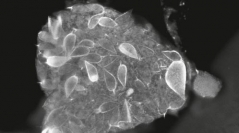

 Cryptogamie, Algologie
38 (1) - Pages 53-72
Cryptogamie, Algologie
38 (1) - Pages 53-72Kongsfjorden (Spitsbergen, Svalbard) is an inlet treated as a model site for studies on the impact of climate change in the Arctic due to its hydrological features. In this research, seven-days monitoring was carried out to evaluate the effects of hydrological variability on phytoplankton biomass and diversity in the late summer period. Temperature, salinity, nutrients, total suspended matter, phytoplankton abundance and biomass were determined for each sample. The thermo-haline properties of the column water seemed to affect phytoplankton communities. Their abundances and biomass were correlated with the amount of the total suspended matter. Moreover, species composition and biomass dramatically changed throughout the study period. Cold-water and Atlantic species were replaced by temperatewarm water dinoflagellates, including harmful species. An increase in phytoplankton biomass as well as the presence of dinoflagellate aggregations, mainly composed of Prorocentrum cf. gracile, were detected. This kind of algal accumulation is a new phenomenon in the Arctic and was probably related to the mobilization of sediment-rich glacial meltwaters. These findings, even if preliminary, suggest the need to study how additional biomass pulses and the increase of harmful species may alter the food web structure and the biogeochemical cycles, leading to major ecosystem changes.